A collection of videos relating to the diagnosis and treatment of eye movement disorders. This collection includes many demonstrations of examination techniques.
Dan Gold, D.O., Associate Professor of Neurology, Ophthalmology, Neurosurgery, Otolaryngology - Head & Neck Surgery, Emergency Medicine, and Medicine, The Johns Hopkins School of Medicine.
A collection of videos relating to the diagnosis and treatment of eye movement disorders.
NOVEL: https://novel.utah.edu/
TO
Filters: Collection: ehsl_novel_gold
| Title | Description | Subject | ||
|---|---|---|---|---|
| 276 |
 |
Penlight Cover Test (Partial Removal of Fixation) | Penlight cover test (partial removal of fixation): during in-person clinical encounters, the maneuvers below are best tested with complete (or near complete) removal of fixation (e.g., Frenzel or video Frenzel goggles). Removal of fixation is more challenging during virtual evaluations but can be ap... | Penlight Cover Test (Partial Removal of Fixation) |
| 277 |
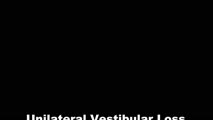 |
Peripheral (Vestibular) and Central (Gaze-Evoked) Patterns of Nystagmus in a Single Patient | A 55-year-old man experienced episodic vertigo and was diagnosed with Meniere's disease affecting the left ear (based on audiograms and his clinical course) about 1 year prior to presentation. About 6 months prior to presentation, intratympanic (IT) gentamicin was injected into the left ear, at whic... | Jerk Nystagmus; Vestibular Nystagmus; Bruns; Gaze Evoked Nystagmus; VOR HIT Abnormal |
| 278 |
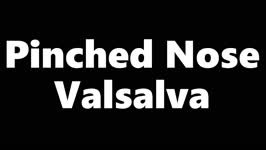 |
Pinched Nose Valsalva | Valsalva (closed glottis or pinched nose): instruct the patient to take a deep breath and ‘bear down' (closed glottis) or take a deep breath and ‘try to pop their ears' (pinched nose). Assess for nystagmus. In superior canal dehiscence, pressure changes may be transmitted to the superior canal, ... | Pinched Nose Valsalva |
| 279 |
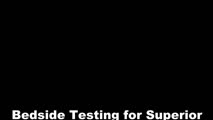 |
Pressure Testing for Superior Canal Dehiscence Syndrome | 𝗢𝗿𝗶𝗴𝗶𝗻𝗮𝗹 𝗗𝗲𝘀𝗰𝗿𝗶𝗽𝘁𝗶𝗼𝗻: Superior semicircular canal dehiscence syndrome (SCDS) is caused by a third mobile window in the inner ear. This allows for transmission of sound or pressure to the superior canal. Tragal compression and/or glottic and ... | Valsalva; Superior Canal Dehiscence Syndrome |
| 280 |
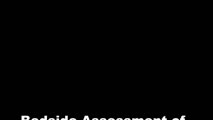 |
Provocative Maneuvers (Removal of Fixation, Vibration, Head-Shaking) to Accentuate Peripheral Vestibular Nystagmus) | 𝗢𝗿𝗶𝗴𝗶𝗻𝗮𝗹 𝗗𝗲𝘀𝗰𝗿𝗶𝗽𝘁𝗶𝗼𝗻: With an acute destructive process like vestibular neuritis that causes significant unilateral vestibular loss, spontaneous nystagmus is always present. However, over days to months, spontaneous nystagmus should resolve co... | Headshaking Nystagmus |
| 281 |
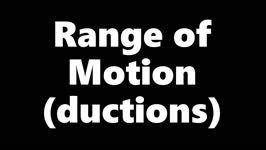 |
Range of Motion (Ductions) | Range of motion (ductions): check the range of each individual eye (ductions) if there is diplopia or if a motility deficit is suspected. Instructing the patient to hold their head 20o to the right or to the left may provide a better view of the range of horizontal gaze, if there is diplopia or if a... | Range of Motion; Ductions |
| 282 |
 |
Rotary Chair Testing | 𝗢𝗿𝗶𝗴𝗶𝗻𝗮𝗹 𝗗𝗲𝘀𝗰𝗿𝗶𝗽𝘁𝗶𝗼𝗻: Rotary chair testing includes rotation around a vertical axis, and evaluates the horizontal semicircular canal vestibulo-ocular reflex (VOR). The patient sits in a mechanized chair with the head secured in a neutral posi... | Normal VOR; Abnormal VOR; Vestibular Lab Testing; Rotary Chair |
| 283 |
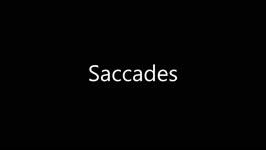 |
Saccades | Saccades: instruct the patient to make rapid movements of their eyes in each gaze direction, noting the speed, conjugacy, latency, and accuracy. First have the patient look between an eccentric target and the camera horizontally and vertically, making assessment of accuracy easier - e.g., overshooti... | Saccades |
| 284 |
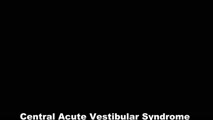 |
Skew Deviation and Spontaneous Nystagmus Due to Posterior Fossa Lesions | This is a 50-year-old woman who reported the abrupt onset of imbalance, right upper extremity incoordination and binocular vertical diplopia several months prior to her presentation to our clinic. On examination, she had a left hypertropia that was fairly comitant (measuring 5 prism diopters) assoc... | Abnormal Alignment; Jerk Nystagmus; Upbeat Nystagmus; Vestibular Nystagmus; Rotary Nystagmus; Skew Deviation |
| 285 |
 |
Slow Saccades Due to Unilateral Paramedian Pontine Reticular Formation (PPRF) Injury with Preserved Movements Using the Vestibulo-Ocular Reflex | 𝗢𝗿𝗶𝗴𝗶𝗻𝗮𝗹 𝗗𝗲𝘀𝗰𝗿𝗶𝗽𝘁𝗶𝗼𝗻: This is a 60-year-old man who presented for imbalance and oscillopsia 10 months after surgery and 8 months after radiation for Merkel cell carcinoma of the neck. He developed imbalance after surgery and diplopia and osci... | Abnormal Saccades; Pons OMS; Sixth Abducens Nerve; Abnormal VOR; Vestibulocochlear Nerve; Horizontal Gaze Palsy |
| 286 |
 |
Slow Volitional Saccades and Poor Fast Phases to an Optokinetic Stimulus, with Preserved Head Impulse Testing | This is a 67-year-old woman presenting with imbalance and binocular horizontal diplopia at near. On examination there were frequent square wave jerks, limited supraduction OU and convergence insufficiency, which explained her diplopia. Pursuit and suppression of the vestibulo-ocular reflex were sa... | Abnormal Saccades; VOR HIT Normal |
| 287 |
 |
Smooth Pursuit | Smooth pursuit: instruct the patient to hold their head steady, fix their eyes on the camera and slowly move the camera in the horizontal and vertical planes. Or, have the patient focus on their outstretched thumbnail (or other small fixation target), while following the slowly moving object horizon... | Smooth Pursuit |
| 288 |
 |
Spontaneous Upbeat Nystagmus in Acute Wernicke's Encephalopathy | 𝗢𝗿𝗶𝗴𝗶𝗻𝗮𝗹 𝗗𝗲𝘀𝗰𝗿𝗶𝗽𝘁𝗶𝗼𝗻: This is a 40-year-old woman presenting with imbalance, confusion and oscillopsia. Exam demonstrated upbeat nystagmus (UBN) in primary gaze that remained UB in all directions of gaze, with a slight torsional component (top... | Upbeat Nystagmus; Jerk Nystagmus; Medullar OMS |
| 289 |
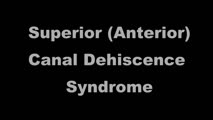 |
Superior Canal Dehiscence | 𝗢𝗿𝗶𝗴𝗶𝗻𝗮𝗹 𝗗𝗲𝘀𝗰𝗿𝗶𝗽𝘁𝗶𝗼𝗻: This is a 60-yo-man who complained of autophony (eg, hearing his own heartbeat, noting that his own voice sounded too loud) and dizziness triggered with loud noises and straining at times. With pinched-nose Valsalva maneu... | Nystagmus; Superior Canal Dehiscence; Valsalva |
| 290 |
 |
Test Your Knowledge - Bilateral 4th Nerve Palsies | Watch the video until instructed to stop. Which of the following features is likely to be present given her exam findings? A. Gaze-evoked nystagmus and impaired smooth pursuit B. History of traumatic brain injury C. History of blepharoplasty or brow lift surgery and prominence of superior sulcus on ... | Abnormal Alignment; Fourth Nerve; Trochlear Nerve |
| 291 |
 |
Test Your Knowledge - Central and Peripheral Vestibular and Ocular Motor Signs Due to a Large Vestibular Schwannoma | Which of the following is least likely to be the correct localization or etiology given the findings seen in the video? 1) Acute right 8th cranial neuropathy 2) Right-sided vestibular schwannoma 3) Right vestibular nucleus infarction 4) Right anterior inferior cerebellar artery distribution stroke A... | Abnormal VOR; Jerk Nystagmus; Vestibular Nystagmus; Gaze Evoked Nystagmus; Bruns Nystagmus; Cerebellar OMS |
| 292 |
 |
Test Your Knowledge - Monocular Oscillopsia | 𝗢𝗿𝗶𝗴𝗶𝗻𝗮𝗹 𝗗𝗲𝘀𝗰𝗿𝗶𝗽𝘁𝗶𝗼𝗻: Which of the following associated signs is most likely to be seen in this patient presenting with oscillopsia? A. Optic nerve pallor B. Palatal tremor C. Severe unilateral cataract D. Head bobbing E. Neurovascular contact... | Pendular Nystagmus |
| 293 |
 |
Test Your Knowledge - Optokinetic Nystagmus with a Parietal Lesion | 𝗢𝗿𝗶𝗴𝗶𝗻𝗮𝗹 𝗗𝗲𝘀𝗰𝗿𝗶𝗽𝘁𝗶𝗼𝗻: Given the finding seen in the first part of the video, which of the following associated features are most likely? (more than one answer may be correct) A. Left homonymous visual field defect B. Right homonymous visual fi... | Abnormal OKN; Jerk Nystagmus |
| 294 |
 |
Test Your Knowledge - Oscillopsia | This 65-year-old man with multiple sclerosis described that objects in front of him appear to spontaneously jump or move horizontally for the last few months. He reported that his symptoms occur independent of head movements and head impulse testing was normal. After viewing the video, what is the m... | Pendular Nystagmus; Jerk Nystagmus; Abducting Nystagmus; Internuclear Ophthalmoplegia |
| 295 |
 |
Test Your Knowledge - Vertical Saccadic Palsy Due to Bilateral riMLF Infarctions | This is a 30-year-old who was found minimally responsive on the lounge floor of an ice skating rink. He was brought to the ED, where he had a GCS score of 8 (where 15 is normal) for poor responsiveness. His ocular motor exam is shown in the video. Regarding Finding #1, which of the following is fals... | Abnormal Saccades; Normal Optokinetic; Abnormal Range; Vertical Gaze Palsy; Upgaze Palsy; Downgaze Palsy; Mesencephalon; Ocular Motor |
| 296 |
 |
Test Your Knowledge: The Acute Vestibular Syndrome with Gaze-Evoked Nystagmus and Bilaterally Abnormal Head Impulse Testing Due to Middle Cerebellar Peduncle and Flocculus Hemorrhage | This is a 70-year-old woman with a history of atrial fibrillation on warfarin presenting with acute prolonged vertigo and imbalance. In addition to the findings demonstrated in the first part of the video, what else should be seen to reassure the examiner that the etiology of her vertigo is benign? ... | Abnormal VOR; Jerk Nystagmus; Acute Vestibular Syndrome; Cerebellar OMS; Gaze Evoked Nystagmus |
| 297 |
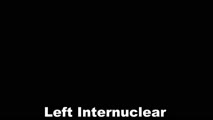 |
Testing for Adduction Lag in Partial INO Using an Optokinetic Stimulus | In this patient we demonstrate the use of an optokinetic stimulus to elicit an internuclear ophthalmoplegia (INO). Occasionally adduction appears to be normal with an INO, and an adduction lag with horizontal saccades should be sought as a confirmatory sign. Optokinetic tape is an easy way to assess... | INO; Jerk Nystagmus |
| 298 |
 |
Trigeminal Motor Neuropathy with Weakness and Atrophy of the Muscles of Mastication | This is a man who was diagnosed with polio in childhood, which involved the motor (VIII) division of the right trigeminal nerve. The motor portion of the trigeminal nerve innervates the muscles of mastication (temporalis, masseter - both of which demonstrate wasting in this patient - as well as the ... | Trigeminal Nerve |
| 299 |
 |
Trigeminal Neuropathy with Loss of the Corneal Reflex | This is a woman who underwent radiofrequency ablation for left trigeminal neuralgia. Examination demonstrated loss of facial sensation on the left in addition to an absent corneal reflex on the left, consistent with involvement of the V1 (ophthalmic) branch of the trigeminal nerve. When the cornea i... | Trigeminal Nerve |
| 300 |
 |
Valsalva (Closed Glottis) | Valsalva (closed glottis or pinched nose): instruct the patient to take a deep breath and ‘bear down' (closed glottis) or take a deep breath and ‘try to pop their ears' (pinched nose). Assess for nystagmus. In superior canal dehiscence, pressure changes may be transmitted to the superior canal, ... | Valsalva (Closed Glottis) |
